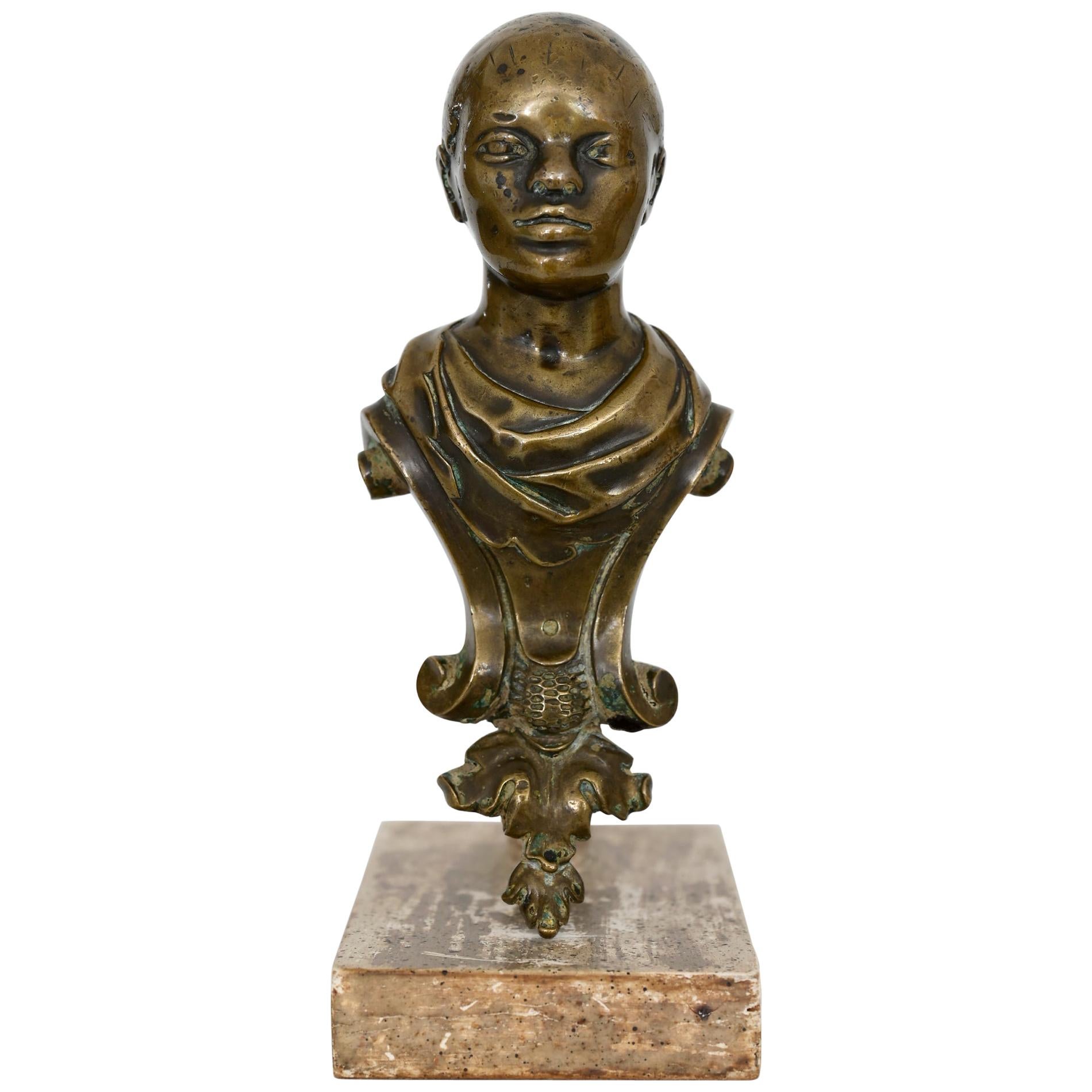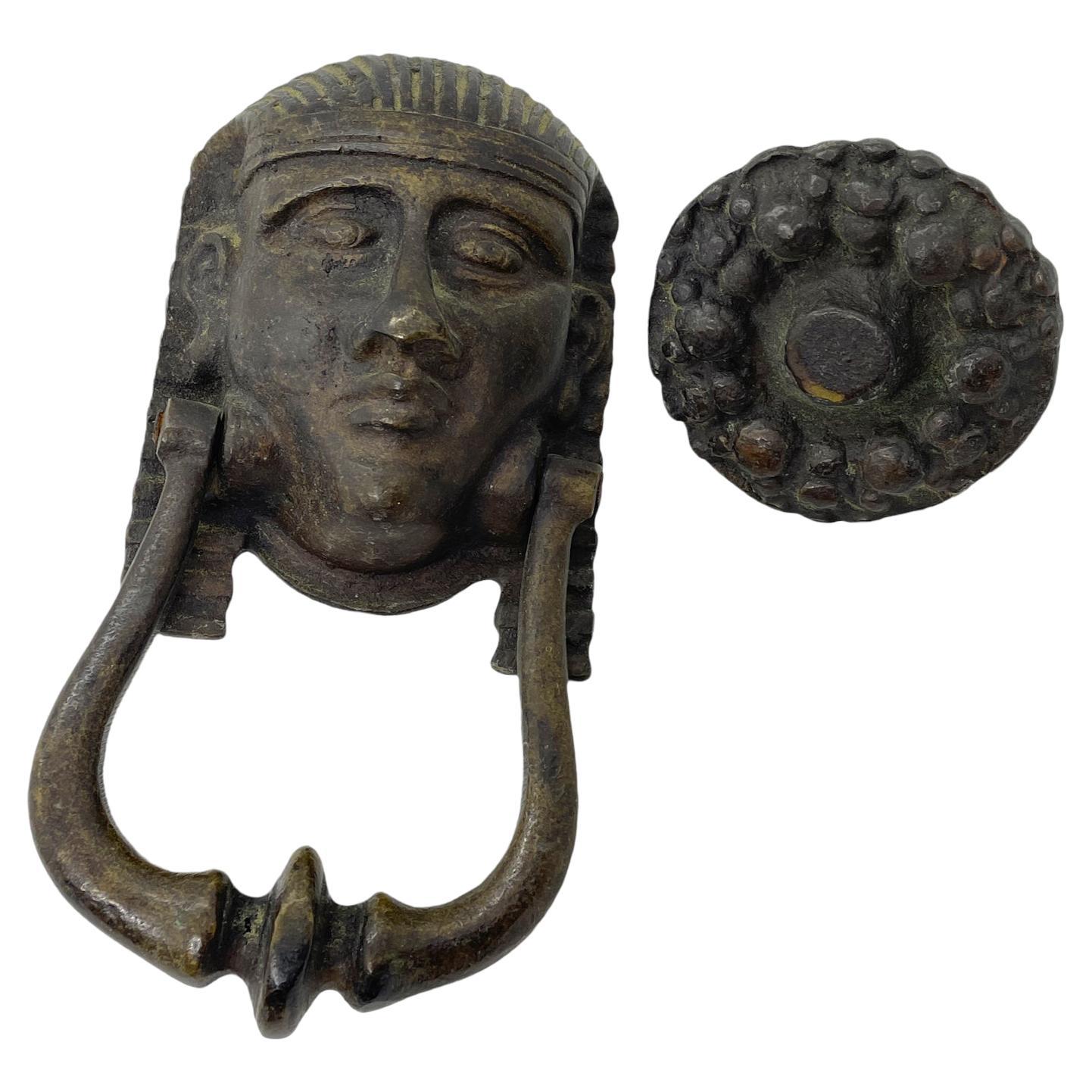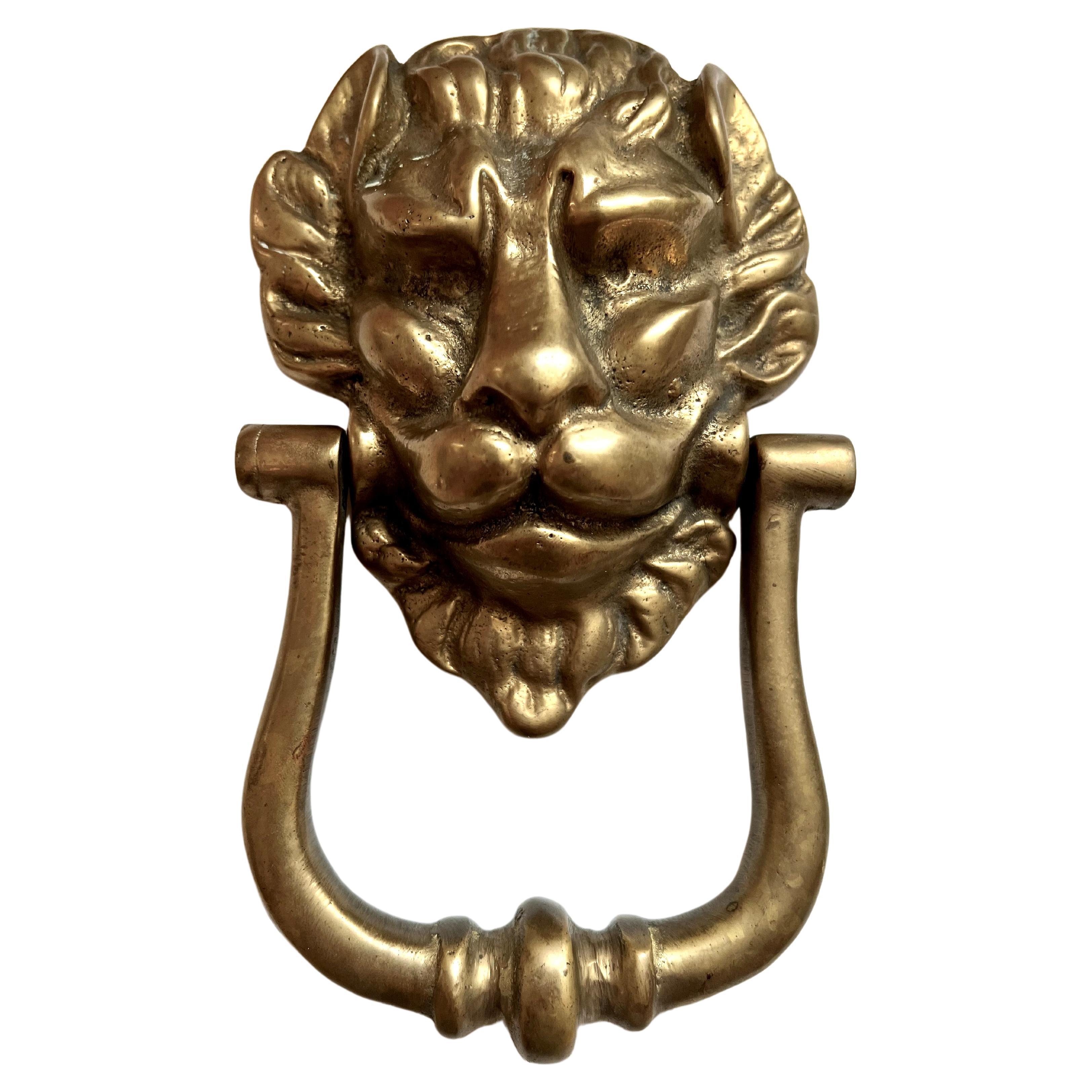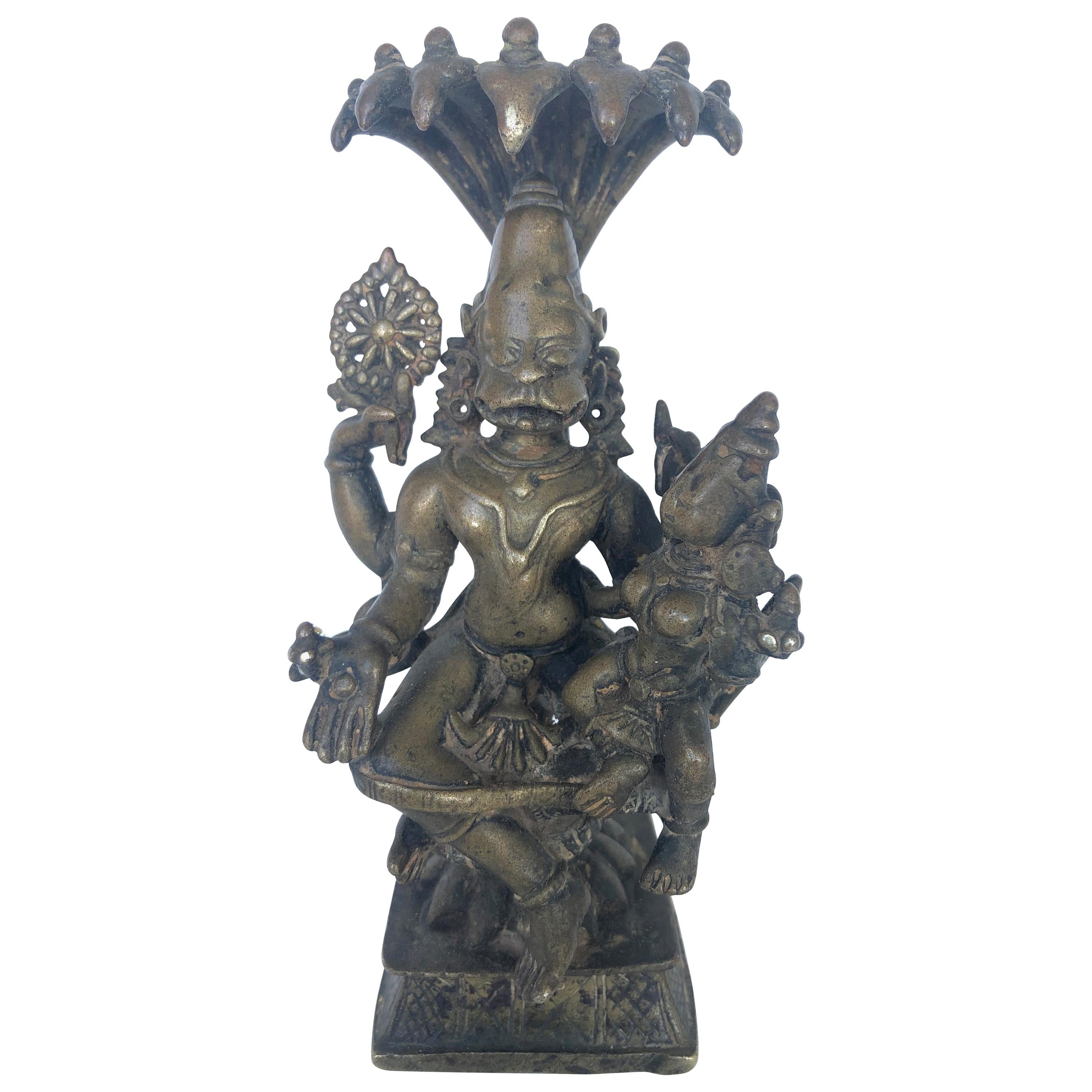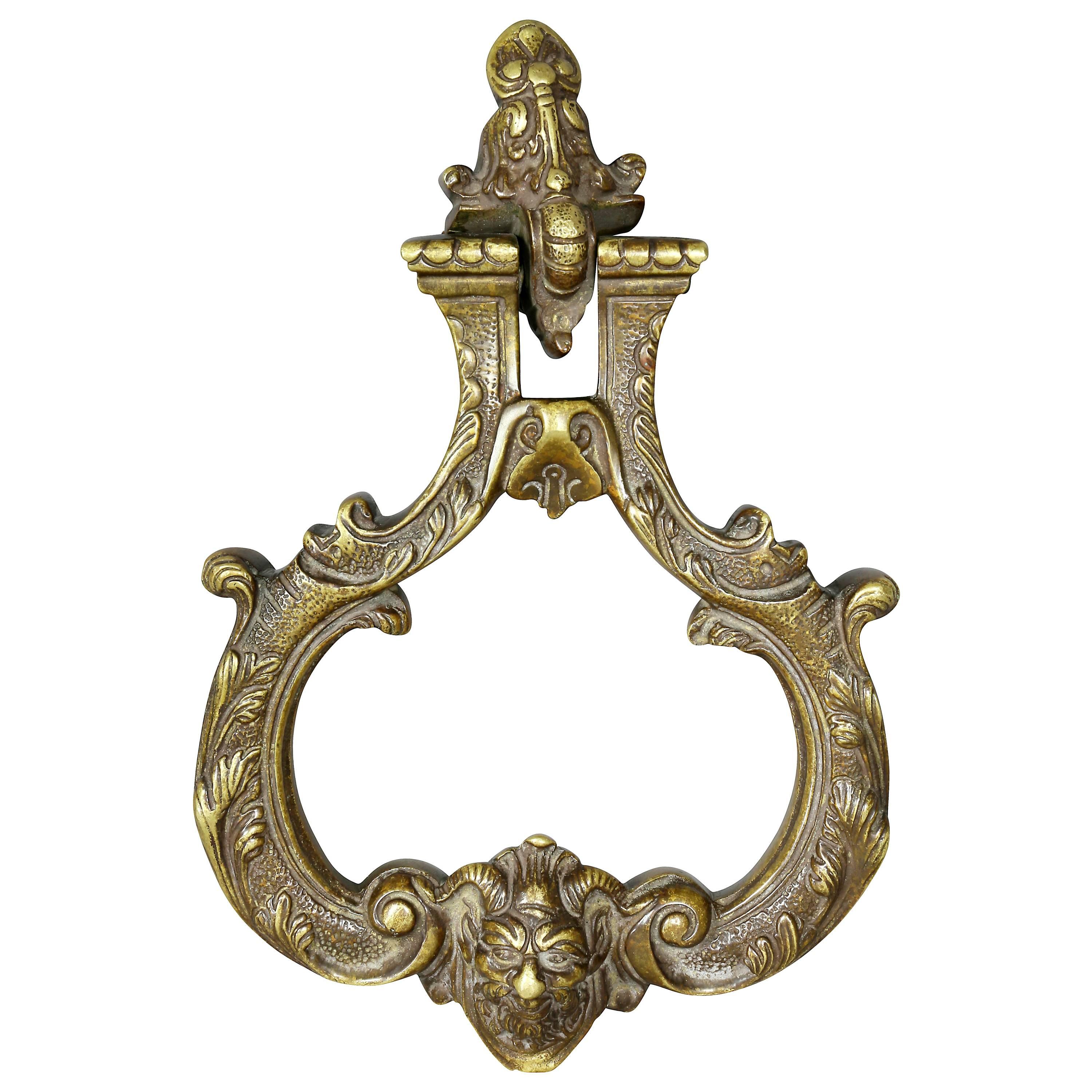Items Similar to massive rare south German lion bronze Door Knocker, 17th Century
Want more images or videos?
Request additional images or videos from the seller
1 of 21
massive rare south German lion bronze Door Knocker, 17th Century
About the Item
very big and massive bronze door knocker, German or maybe Italian in origin, 16-17th century, amazing green original patina to the face, some scares and dings to the face which gives him a lot more character and can maybe tell us a bit on its history, very naive looking almost human like lion face.
can be an amazing addition to any period door, or just stand on its plexiglass stand in any environment just as a sculpture.
- Dimensions:Height: 11 in (27.94 cm)Width: 6.8 in (17.28 cm)Depth: 4 in (10.16 cm)
- Style:Renaissance (Of the Period)
- Materials and Techniques:
- Place of Origin:
- Period:Late 17th Century
- Date of Manufacture:1690
- Condition:Wear consistent with age and use. some minor scratches, dings and "scares" to the face, missing one nut.
- Seller Location:Tel Aviv - Jaffa, IL
- Reference Number:1stDibs: LU8130238145102
About the Seller
No Reviews Yet
Vetted Seller
These experienced sellers undergo a comprehensive evaluation by our team of in-house experts.
1stDibs seller since 2023
- ShippingRetrieving quote...Ships From: Tel Aviv - Jaffa, Israel
- Return PolicyThis item cannot be returned.
More From This SellerView All
- Rare "Safed" kiddush cup, late 19th century Poland/ Eretz ISRAELLocated in Tel Aviv - Jaffa, ILThis 84 silver cup was made in Europe, in Poland or parts of Poland that are in modern Russia in the 19th century, the interesting and important in this cup types is that they were s...Category
Antique 1890s Israeli Sterling Silver
MaterialsSilver
- Very Rare 18th Century Judaica Kiddush Cup, Rothschild Family ProvenanceLocated in Tel Aviv - Jaffa, ILThis is a rare German silver kiddush cup that was made in Hochhausen (Tauberbischofsheim) or In the area, the marks on the cup relate to German silver in the 18th century, there Is a loth 13 silver mark which is 812,5 silver fineness. A Jewish Community in Hochhausen has been known since the 17th century. In 1706, four Jews from Hochhausen were named, each of whom had to pay ten Guilders for protection money. The Jewish Community in Hochhausen owned a synagogue, a Jewish school, The Jewish cemetery in Hochhausen and a ritual bath, which adjoined the Property at Mühlenwörth 7. The bathing house that was probably there was about 3 m by 4 m and got the water of the Tauber via a small canal from the Mühlkanal. The ritual bath came into the possession of the mill around 1920 and was Probably filled in at the time. A separate religious education teacher was Employed, who also worked as prayer leader and schochet. In 1827 the Jewish Community in Hochhausen was assigned to the district rabbinate of Wertheim, Which temporarily had its seat in the Jewish Community of Tauberbischofsheim From 1850 to 1864. The cup is adorned with an amazing engraving in old German style says : Familie Rothschild Hochhausen We can see that the family member that ordered this cup from a silversmith was Proud in his family name as he asked it to be engraved in such bold germanic Style letters. The font type is Fraktur it is a calligraphic hand of the Latin alphabet and any of Several blackletter typefaces derived from this hand. Letters are designed such That the individual strokes are broken apart; in this way it is often contrasted with The curves of the Antiqua (common) typefaces where the letters are designed to Flow and strokes connect together in a continuous fashion. The first Fraktur typeface arose in the early 16th century, when Emperor Maximilian I commissioned the design of the Triumphal Arch woodcut by Albrecht Dürer and had a new typeface created specifically for this purpose, designed by Hieronymus Andreae. The Rothschild family...Category
Antique Mid-18th Century German Sterling Silver
MaterialsSilver
- Rare German Parcel-Gilt Silver Canister, Abraham Drentwett i, Augsburg 1649-1666Located in Tel Aviv - Jaffa, ILImportant German parcel-gilt silver canister, Abraham Drentwett I, Augsburg, circa 1649-1666 Abraham Drentwett I is one of Augsburg's foremost silversmiths during the Baroque period. He was Active 1641-1666 , he is best known for having executed Queen Christina's silver throne...Category
Antique 17th Century German Baroque Sterling Silver
MaterialsSilver
- extremely rare Algerian Judaica silver, jewish Dowry box early 19th centuryLocated in Tel Aviv - Jaffa, ILAmazing and scarce JUDAICA object, we have here one of the most touching jewish objects we had for a long time, this small silver dowry box was made in Algeria in the early 19th century, it is all covered with symbols of jewish faith and of couples, the sliding lid has 2 flanking birds with hamsa (protective hand) on each side and a flower vase in the middle. one side shows two flanking lions with a tree in the middle and the other side shows again two big and two small birds with a flower bowl in the middle, front side has a key hole and next to it there is the Hebrew inscription ס״ט״" which says Siman tov or in English "a good sign" it is taken from the wedding blessing, underneath the lock there is another inscription with the name ״עזיזה בת אברהם בן חמו״ which is the name of the bride, her father and her grandfathers name. the box is full marked a lot of times with the silversmith mark, every side of the box is marked. this box was probably ordered by the grooms family to hold the jewelry they are giving to the bride as dowry, this type of objects are rare and there are just a few of them on museum collections. DOWRY (Heb. נְדֻנְיָה), the property a wife brings to her husband at marriage; the Yiddish equivalent, nadn, is from the same root. The custom of nedunyah became clearly defined and institutionalized only in the talmudic period. In biblical times, mohar (מֹהַר), whereby the groom bought his wife from her father (Gen. 24:53; Ex. 22:15–16; Hos. 3:2), was the accepted practice. It was then customary that the groom give the bride gifts, and that she bring certain property to her husband's home upon marriage: slaves, cattle, real estate, etc. (cf. Gen. 24:59–61; 29; Judg. 1:14ff.; I Kings 9:16). Evidence of the custom of nedunyah is to be found in Tobit (7:14; 8:21) and in the Assuan papyri (Cowley, Aramaic, nos. 15, 18). Gradually, mohar was superseded by the ketubbah custom according to which the husband merely assumed the responsibility of compensation to his wife in case he divorced her: he had to pay her 200 zuzim if she had been a virgin at the time of marriage, and 100 zuzim if a widow or divorcée (see *Ketubbah). By talmudic times, the institution of nedunyah was prevalent; the father gave a dowry to the bride since the daughter was excluded from paternal inheritance. Fifty zuzim (equivalent to the worth of 180 grams of silver) was the minimum amount a father was obliged to give to his daughter (Ket. 6:5). Parents usually gave much more, according to their social standing. Community funds provided the dowry for an orphan or a very poor girl (ibid.; cf. Sh. Ar., YD 251:8). In case of her father's death, the brothers of a minor girl were obliged to give her the minimum dowry, and the court estimated how much her father would have given her above the minimum dowry. The sum was then taken out of the father's estate and given to the daughter upon majority (Ket. 6:6; 68a–69b). In the absence of such an estimate, each daughter was entitled to receive one-tenth of the value of her father's estate in money, or in valuables (Yad, Ishut, 20:4–7; Sh. Ar., EH 113:4). If the father was unable or unwilling to pay the promised dowry at the betrothal ceremony, the groom could refuse to marry his bride (Ket. 13:5; Ket. 108b–109a). Insistence on exact payment of the promised dowry, however, was frowned upon by later rabbinic authorities (Rema to Sh. Ar., EH 2:1). In certain communities it was customary for the groom's father to make a dowry contribution equal to that of the bride's father (Ket. 102b). The dowry, whether given in real estate, slaves, money, or chattel was recorded in the marriage contract (the ketubbah) and in some instances one-third or one-fifth of the actual value of the dowry was added to the sum mentioned in the ketubbah. Based upon a decree enacted by *Simeon b. Shetah (first century C.E.), the Talmud ruled that the husband and his entire property were liable for compensation as stipulated in the ketubbah, either in case he died (when she collected the sum specified in the ketubbah from the heirs) or in case he divorced his wife (Ket. 82b). For the status of the dowry and the husband's rights and obligations, see below. The rabbinic enactments (Takkanot Shum) by R. Jacob *Tam and by the rabbinic synod of the communities of Speyer, Worms, and Mainz (Germany) stipulated that if a woman died...Category
Antique Mid-19th Century Algerian Tribal Art
MaterialsSilver
- Rare Antique Novelty German silver antler and silver cigar cutter, 1890-1900Located in Tel Aviv - Jaffa, ILVery attractive German silver mounted on an antler, cigar cutter This cigar cutter is designed as oak leaves falling on the antler and in the middle There is a game bird of some kind hung from it, very realistic and well made. This kind of objects were made in Germany and Austria so they can be given as High end gifts, used as a display piece with function in men clubs...Category
Antique 1890s Sterling Silver
MaterialsSilver, Steel
- French faience Passover plate, JUDAICA 19th centuryLocated in Tel Aviv - Jaffa, ILthis plate has a creme white background, the center painted with a man holding a lamb before a cityscape, probably a depiction of Jerusalem by someone who never actually visited the city or even see it, under the man there is the word Passover "פסח" the rim with the order of the Seder, and some grape vines between them. Passover, also called Pesach ( Biblical Hebrew: חַג הַפֶּסַח, romanized: Ḥag haPesaḥ), is a major Jewish holiday, one of the three pilgrimage festivals, that celebrates the Biblical story of the Israelites' escape from slavery in Egypt. Pesach starts on the 15th day of the Hebrew month of Nisan which is considered the first month of the Hebrew year. The Hebrew calendar...Category
Antique Late 19th Century French Victorian Platters and Serveware
MaterialsPottery
You May Also Like
- Rare Venice Door Knocker Bronze, 17th CenturyLocated in Epfach, DEA rare and very charming door knocker, Venice, 17th century in bronze with special patina.Category
Antique Late 17th Century Italian Baroque Figurative Sculptures
MaterialsBronze
- Marble Lion, Périgord, 17th CenturyLocated in Bruxelles, BEMarble lion white marble France, probably Périgord, 17th century Small marble lion wearing a coat of arms pendant with the engraved date, ...Category
Antique 17th Century French Renaissance Animal Sculptures
MaterialsMarble
- Beautiful Pharaoh Head Door Knocker, Bronze, German, 19th CenturyLocated in Nuernberg, DEClassic 19th century German Pharaoh head door knocker, made of Bronze. Nice addition to your front door. Found at an estate sale in Germany. It is not mar...Category
Antique 19th Century German Figurative Sculptures
MaterialsMetal, Bronze
- Solid Brass Lion Door KnockerLocated in Los Angeles, CASolid Brass, Georgian Style, Cast door knocker Lion. - a compliment to any door, exterior or interior. A beautifully cast piece of solid brass with a lovely patination that will only...Category
20th Century Georgian Doors and Gates
MaterialsBrass
- Bronze Figure of Narasimha, South India, 16th-17th CenturyLocated in Kensington, MDThe lion-headed deity seated on round base over a stepped platform. Lakshmi seated on his left thigh, his principal hands holding a mace and lotus bud and upper hands holding a chakr...Category
Antique Early 17th Century Indian Tribal Figurative Sculptures
MaterialsBronze
- Italian Bronze Door KnockerLocated in Essex, MAWith arabesques and satyr mask.Category
Antique 1750s Italian Baroque Mounted Objects
Recently Viewed
View AllMore Ways To Browse
Desktop Bookshelf
Toni Zuccheri Duck
Vintage 1960s Murano Glass Sculptures
Iron Antelope
Danish Wood Animal
German Glass Eyes
Baccarat Pelican
Bagni Bull
Black Sleeping Ceramic Cat
Blenko Penguin
Boston Terrier Cast Iron Door Stop
Brass Cat Statue
Brass Ibis Bird
Brass Retriever
Buccellati Silver Turkey
Buccellati Turkey
Bulldog Mascot
Cast Iron Boston Terrier Door Stop
